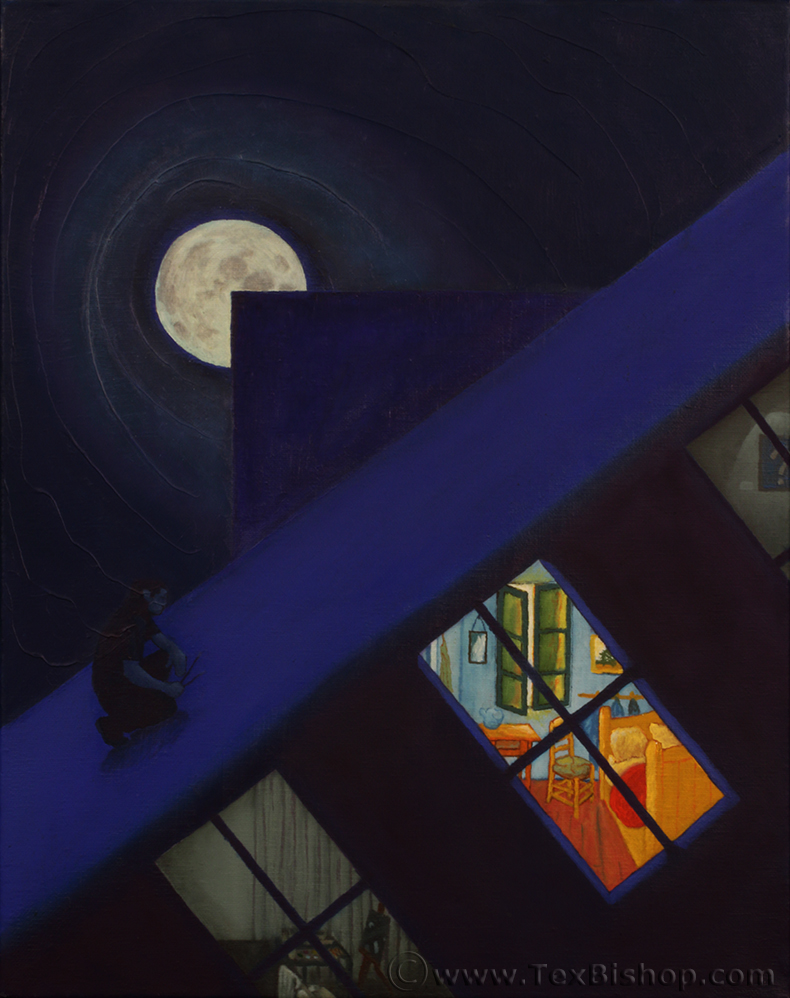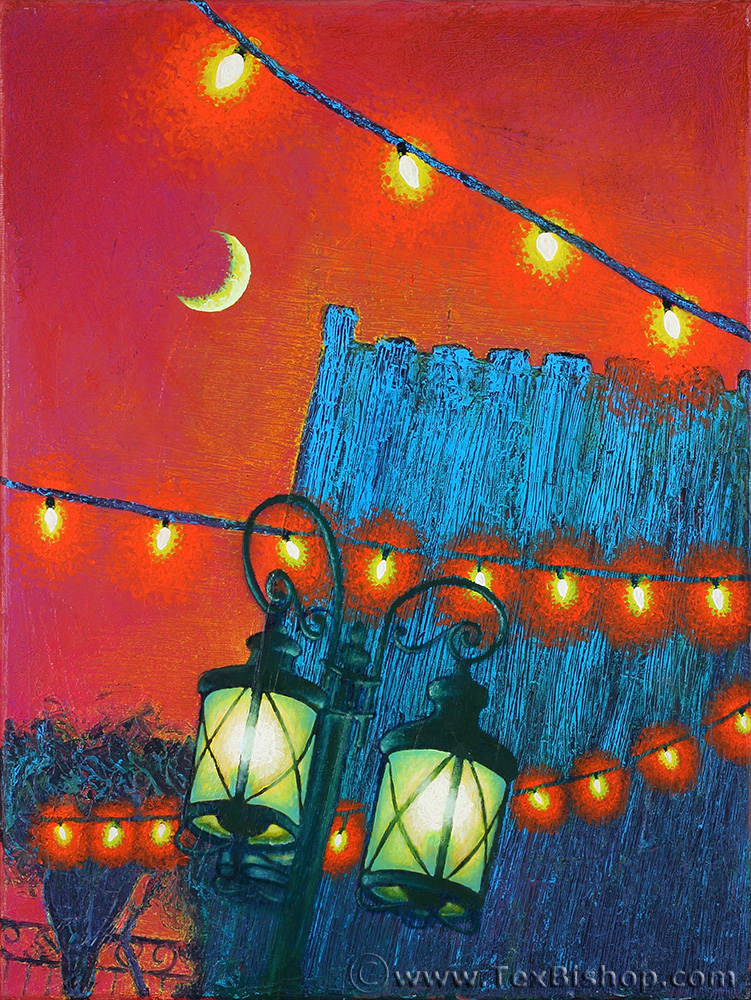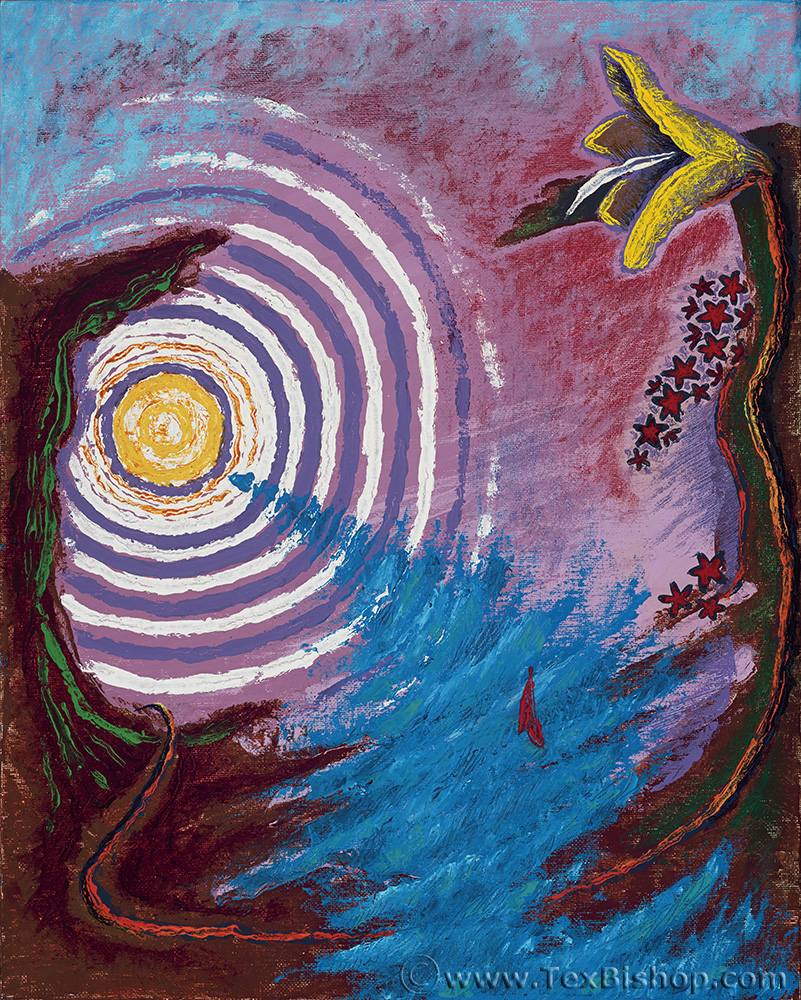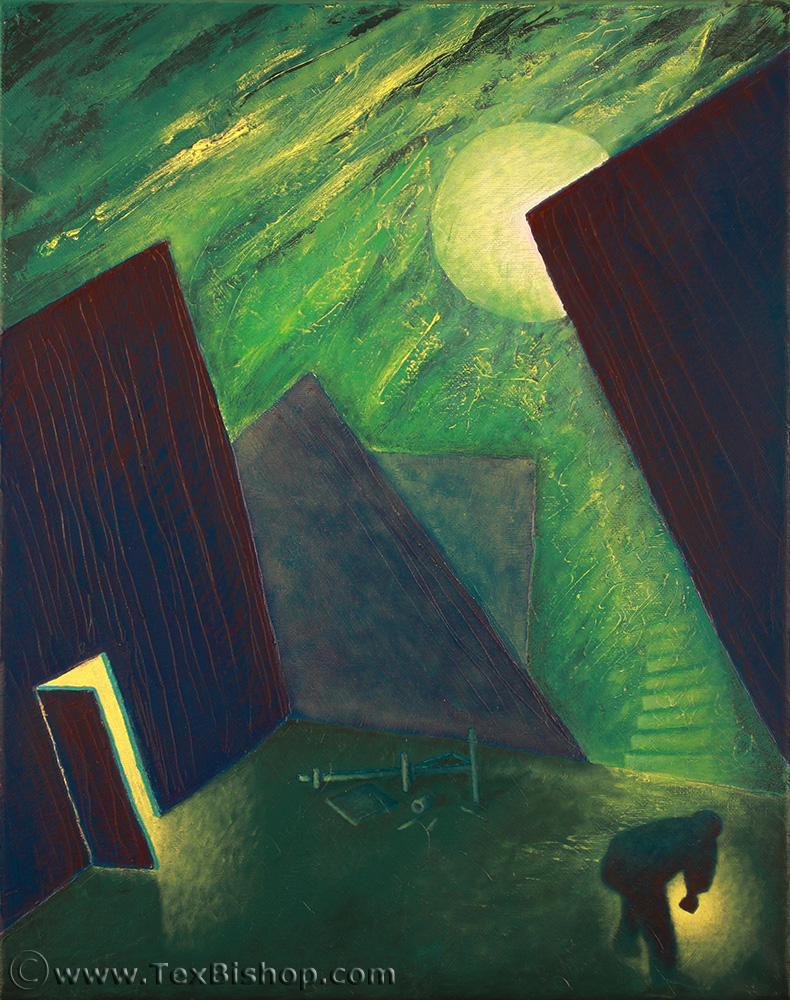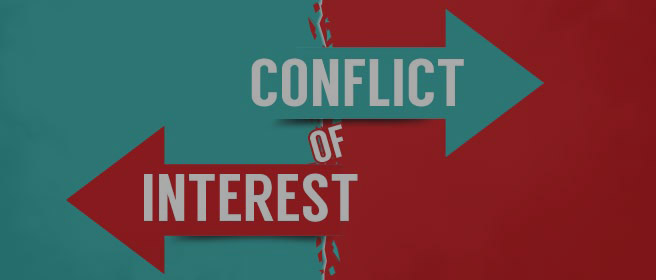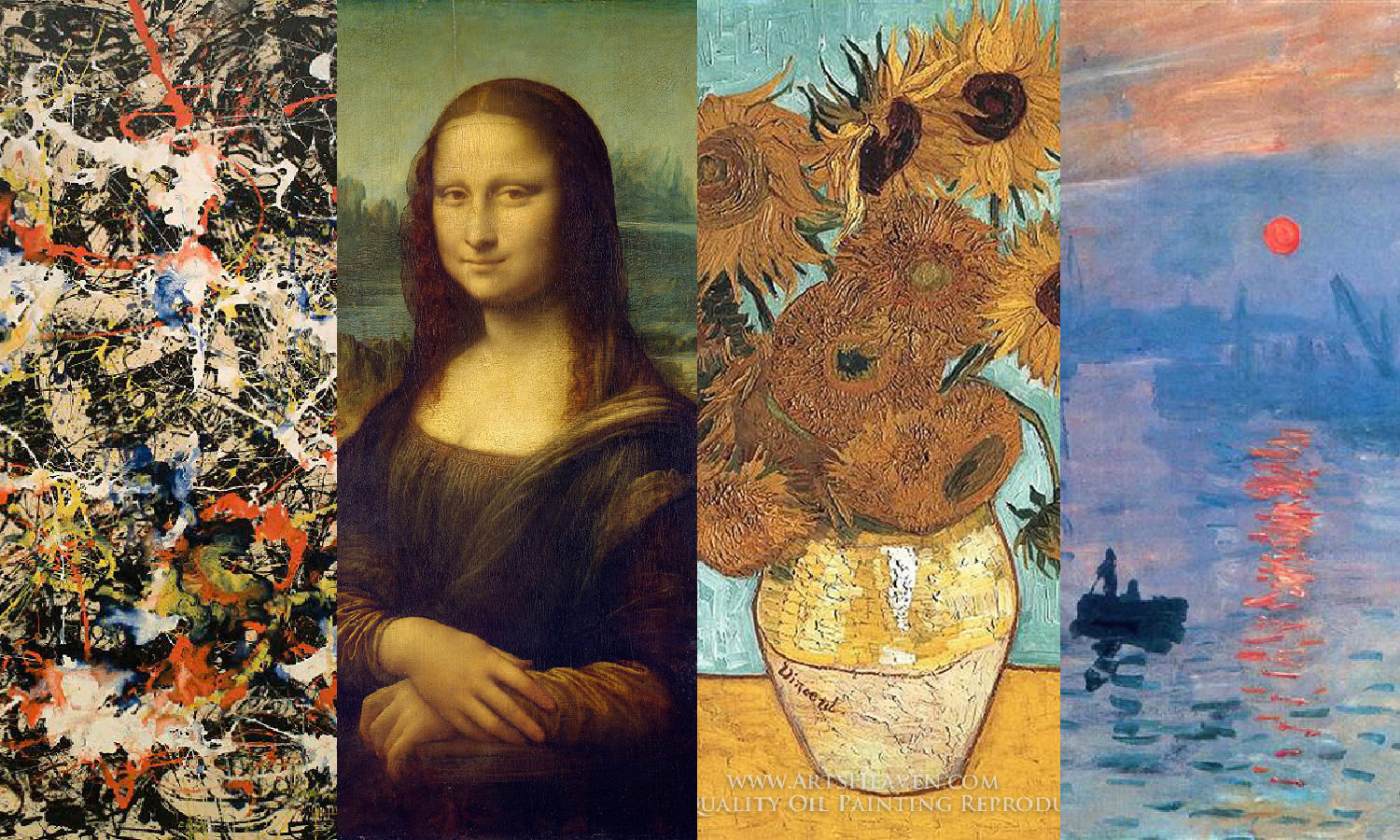Library and Influence

Books.
Living here in Corpus Christi, three and a half hours away from the nearest art museum of import, my primary source of art exposure has been from books. The internet is better for finding contemporary artists, when you're looking for new artists you haven't yet seen. But often, when trying to look at an artist's work on the internet, you'll find that the pictures are of poor quality, or the work available to look at is limited. Some artists maintain a strong internet presence, but others don't.
My personal collection of art books. Not large, but treasured.
Of course, while you sometimes get better quality pictures in books, a larger range of works, and more information on the artist, books aren't without their own issues. For one, they're expensive; the nicer ones can be in the triple digits. If you have a good library nearby, with a nice collection, that can be nice, but actually owning them is better in my opinion. Personally, I have to rely on used book stores, or buying them used online.
But even then, not all art books are created equal, and when you're shopping online, it becomes really difficult to figure out if a book is good or not. It doesn't happen so much anymore, but a lot of art books used to be printed with black and white photos. I don't understand it, what's the point of an art book if the art isn't even in color? But they used to do it a lot, and it's something you have to watch out for when you're buying used art books. Also, some of the older art books are printed on poorer quality paper, that doesn't take detail or color as well. The images don't turn out blurry. They just aren't as crisp, and the color is desaturated to an extent. And then, even when these problems aren't present, sometimes you get books that marginalize the pictures in favor of the text. I personally prefer quality, full page images. Some books don't include any of these, giving you half page images at the largest.
When you're looking at the book at a bookstore, it's easy to pick out these flaws, but you don't have that luxury when buying online. If you're lucky there will be a lot of reviews that you can reference. If the images are in black and white, or the paper quality is lacking, they'll note it. However, it's been my experience that they won't clue you in to a lack of full page images. I guess it's the difference between what an artist wants and what an art fan wants. Most positive reviews I see tend to focus on the quality of the information, and the quality of the images. And upon receiving the book, I find that what they said is true, but the images are small. The best solution I have for this, is to stick to large sized books only. Sizes of less than 12 inches tall are just too small, in my opinion.
One of the other issues you can run into with books, is availability. Sometimes you just have trouble finding books on an artist, even when looking online. I had this issue when looking for books on Rothko, someone I'd have thought was famous enough to have some quality publications. In this case, I've found the internet to be more useful. For a well known artist, a search on google images will generally give you plenty to look at.
However, books or internet, neither compares to seeing the work in person. Reproductions just aren't quite the same. The color is never a perfect match. The shade is off, the saturation is off, even the tint. I've seen paintings that were plain in a book, that were great in person, and vice versa. Those of you that live near a major art museum, that has an extensive permanent collection, and regular shows coming through, should be thankful for and make use of the resource.
Now, why is all of this important? Influence. It's very important for an artist. In fact, it was the go to teaching point of my first painting professor. Looking at the works of other talented artists, does a lot for an artist. It inspires, creates ideas, and teaches. It sets a bar for where you want your own work to be. In a void, without any influence, it's more difficult to improve. Sometimes, the influence of a particular artist is easy to see. But, sometimes, even after having an artist tell you that so-and-so was a big influence, you can't see how. It can be ephemeral and abstract in nature. But it is important.
When it comes to books, for an artist, art books aren't the only useful literature. There are some good informative books on creating art. You'll occasionally see threads asking for these books on forums. And it's a common question when interviewing an artist to ask what their favorite book is. The titles you hear lauded by multiple artists are usually worth owning. Here's a list of the ones I've found.
Color and Light, by James Gurney.
Problem Solving for Oil Painters, by Gregg Kreutz.
The Artist's Handbook, by Ralph Mayer.
Alla Prima II, by Richard Schmid.


